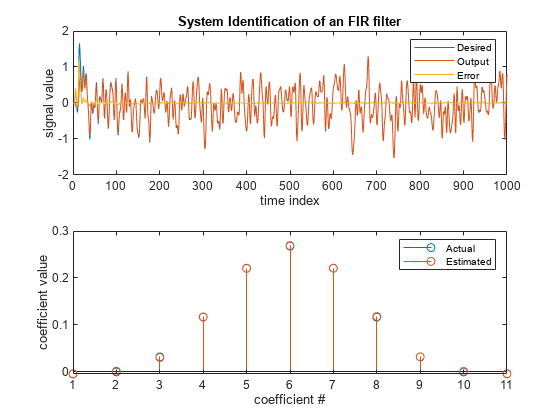dsp.FastTransversalFilter
Fast transversal least-squares FIR adaptive filter
Description
The dsp.FastTransversalFilter computes output, error and
coefficients using a fast transversal least-squares FIR adaptive filter.
To implement the adaptive FIR filter object:
Create the
dsp.FastTransversalFilterobject and set its properties.Call the object with arguments, as if it were a function.
To learn more about how System objects work, see What Are System Objects?
Creation
Syntax
Description
ftf = dsp.FastTransversalFilterftf, which is a fast transversal,
least-squares FIR adaptive filter. This System object computes the filtered output and the filter error for a given input and
desired signal.
ftf = dsp.FastTransversalFilter(len)dsp.FastTrasversalFilter
System object with the Length property set to
len.
ftf = dsp.FastTransversalFilter(Name=Value)length to 64.
Properties
Usage
Syntax
Description
Input Arguments
Output Arguments
Object Functions
To use an object function, specify the
System object as the first input argument. For
example, to release system resources of a System object named obj, use
this syntax:
release(obj)
Examples
References
[1] Haykin, Simon. Adaptive Filter Theory, 4th Ed. Upper Saddle River, NJ: Prentice Hall, 2002.
Extended Capabilities
Version History
Introduced in R2013b
